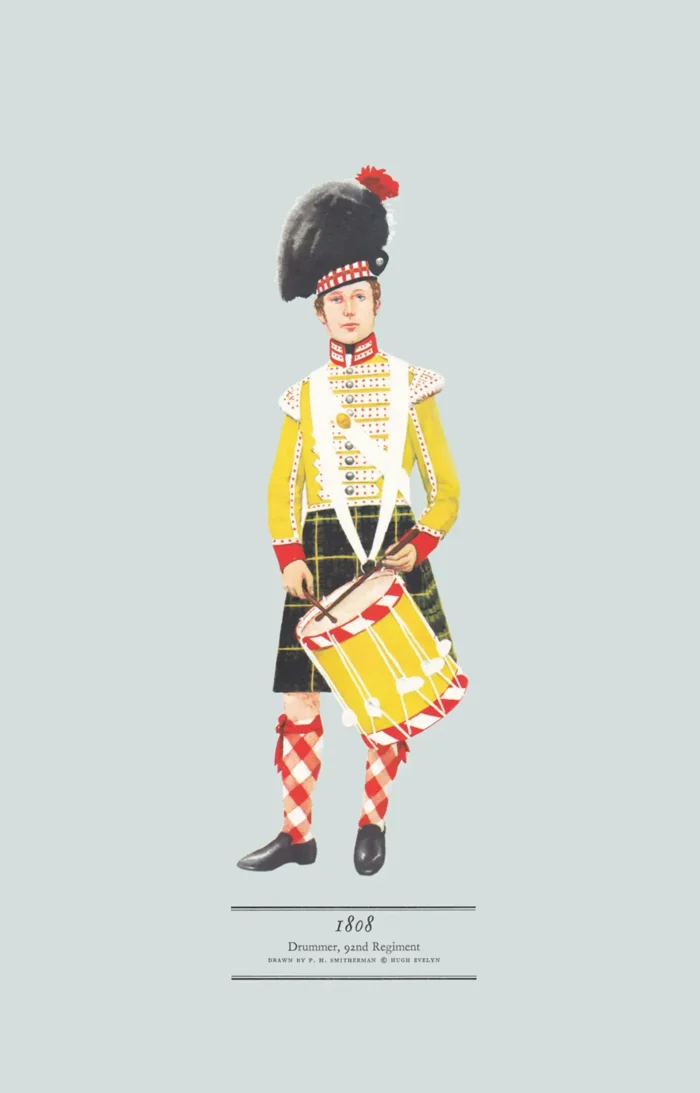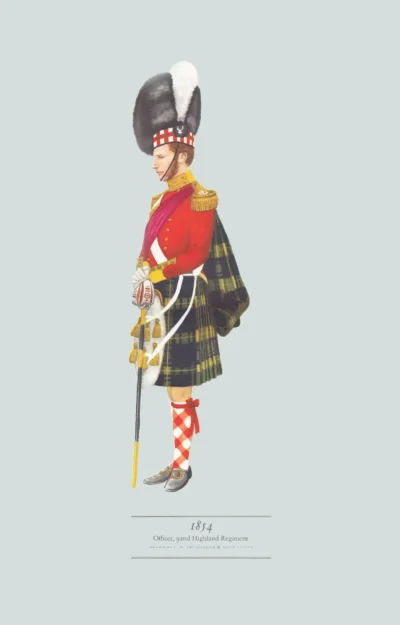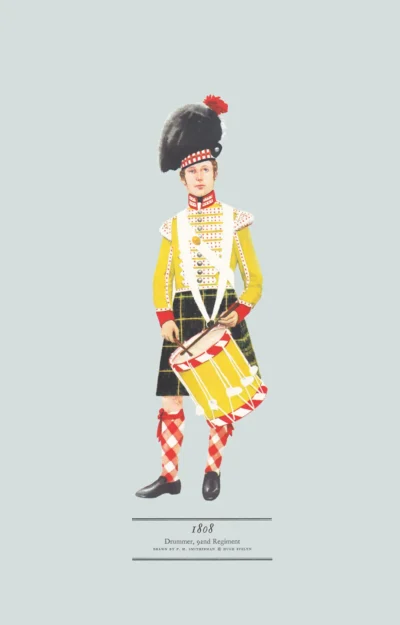Drummer, 92nd Regiment, 1808
£12.00
Raised 1794; from1881 Gordon Highlanders; from 2006 Royal Regiment of Scotland – SCOTS (scroll down for a more detailed Description)
Published 1963 by © Hugh Evelyn Limited; drawn by Colonel Philip Henry Smitherman (1910-1982), Royal Corps of Signals
Size: c. 24.5 x 37.5 cm [9 ½ ″ x 14 ½ ″] (may vary slightly from printers’ cut 50 years ago)
Printed on on medium cardstock weighing 144 g/sm2 faced in light greyish blue (RGB c. d5dede)
Print is STANDARD size – shipping is the same for 1 to 10 prints (based on largest print size in your order) – see Shipping & Returns.
In stock
Description
The Regiment was raised in Aberdeenshire by General George Gordon, 5th Duke of Gordon as the 100th (Gordon Highlanders) Regiment of Foot on 10 February 1794. Reranked the 92nd Highland Regiment in 1798 it amalgamated with Colonel Robert Abercromby’ 75th Stirlingshire Regiment of Foot to form the Gordon Highlanders in 1881. A line infantry regiment of the British Army that existed for 113 years, from 1881 until 1994, it was amalgamated with the Queen’s Own Highlanders (Seaforth and Camerons) to form the Highlanders (Seaforth, Gordons and Camerons) then, in 2006, it became The Highlanders, 4th Battalion, Royal Regiment of Scotland ‘4 SCOTS’. Like the fifer, he wears a coat of the facing colour of the regiment, yellow, with red collar and cuffs, and lace of regimental pattern. The tartan is like that of the Black Watch, with a yellow stripe added. The feathers on the bonnet have increased in size and number and have attained almost the proportions of the final model, current after the Crimean War. The drum carriage hangs in front of the body, a method of carrying a drum which seems awkward. It was not altered until after the Crimean War. Drummers, like fifers, were recruited from specially selected boys, often sons of the regiment, at about the age of fourteen. After fourteen it was difficult to teach them, but before that age they were not strong enough to carry the drum on long marches on active service. They were under the personal supervision of the Drum Major, who was specially selected for his physique and character. The dress of the drum major was decided by the colonel and the officers of the regiment and was often more magnificent than that of the officers.
Additional information
| Weight | 0.0123 kg |
|---|---|
| Dimensions | 23 × 37 cm |





